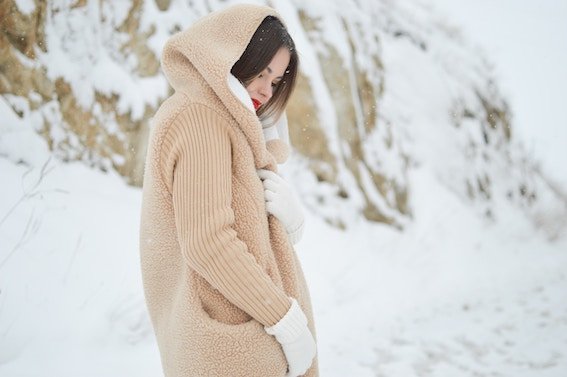
If you didn’t already know, wool fibres come from the fleeces of sheep, camels, rabbits, goats, alpacas, llamas, and other animals. Each type of animal produces a different kind of wool fibre that has unique properties. And wool has oh so many applications! It is suitable for fashion items, carpets, bedding, interior décor and furnishings, insulation, and fabric and yarn crafts. Likewise, wool fabrics have different properties and grades; thus, it can be fun to have some knowledge in the different types of wool cloth to maximise its use and bring out its inherent beauty.
Qualities of wool
Elasticity and resilience are two of the top qualities of wool fibre. You can bend it over 20,000 times without damaging the fibres. The unique cellular composition of the fibres allow the fabric to repel liquid and soak up moisture vapour.
Types of wool fabric and their uses
You can enhance the beauty of wool fabric by knowing the different types and understanding each type’s properties. Wool fibres differ depending on their source. Wool is from different breeds of sheep. Industry people refer to wool fibres from other animals – such as rabbits, alpacas, and goats – as hair.
Lambswool. This is the traditional wool from the fleece of any breed of sheep. The coats of some breeds are hard-wearing, making them suitable for upholstery, carpets, blankets, insulation, and rugs. Other breeds produce a more delicate and softer fleece, which is ideal for apparel.
Merino. Merino wool is a special kind of fibre. It is from the Merino sheep and known to be the finest and softest fleece from sheep. It is costly and distinguished for its anti-pilling characteristics. It is best suited for luxurious clothing and sportswear, as well as for sleep products for infants and babies. The fibres pass through more processes to remove the grease-like substance, lanolin.
Mohair. An Angora goat produces mohair fibres. Mohair wool is coarse, and some people become itchy when wearing this type of wool fabric next to their skin. After treatment, mohair is suitable for socks, coats, sweaters, suits, hats for winter, and beautiful scarves.
Angora. The Angora rabbit produces angora wool. The fibres are soft and fluffy. The Angora rabbit is a special breed; thus, its fleece is very expensive. The fibres of angora wool are usually blended with synthetic fibres such as nylon to improve its stability. Angora is perfect for suits and sweaters.
Cashmere. This type of wool comes from cashmere goats. Cashmere wool is known to produce luxurious and soft fabrics. Cashmere demands a high price because the production is small, as the fibres are taken only from the undercoat on the neck area of cashmere goats. Cashmere fabrics are excellent for dresses, shawls, cardigans, and as accents to clothes, jackets, and outerwear coats.
Alpaca. Alpacas from Peru produce alpaca wool. The fleece is soft, silky, and lustrous. It is hypoallergenic because the fibres do not contain lanolin. However, alpaca wool is warmer than other wool types. Alpaca wool is excellent for designer wear, suits, gloves, hats, socks, sweaters, and fleece jackets.
Now, do remember to read the instructions for the care of wool fabrics so that you can enjoy them for a long time!
